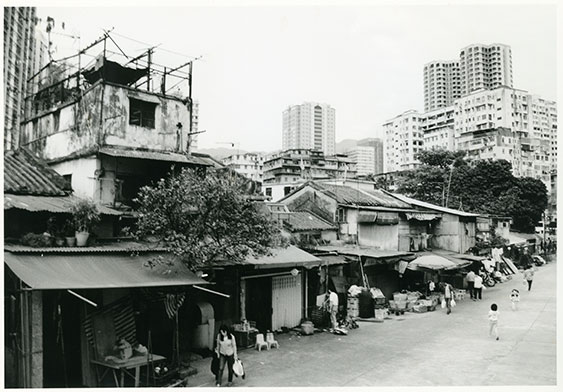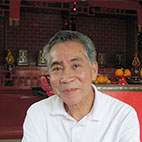
Dwellings and shops on the village outskirts
In the old days, there was no clear demarcation between villages and many new immigrants came to build houses around Nga Tsin Wai after war’s end in 1945. This photo was taken in 1996.-Provided by Tim Ko
Dwellings and shops on the village outskirts
In the old days, there was no clear demarcation between villages and many new immigrants came to build houses around Nga Tsin Wai after war’s end in 1945. This photo was taken in 1996.-Provided by Tim Ko
No distinctions and no boundaries between villages
When Ng Chi Wing was still a child, people’s understanding of the boundaries between villages was not strong. There were vegetable fields surrounding the various villages and a lot of open space between one village and the next, without official title deeds setting out who owned what. As a result, no one paid Crown rent to the Government for the open spaces and children of the various villages used the areas as playgrounds.
During later years, many people – most of them from Chaozhou and Shantou took the open space as their homes and building houses there. People within the walled village had no objection as the villagers lived simple lives without ever thinking about whether their legal rights may have been affected. As the Mainland immigrants needed to apply for communications and electricity meters, they required a clear address for their houses. As a result, street names such as “Nam Pin Street”, “Pei Pin Street” and “Tai Hang Street” began to appear. For this reason, houses built on the north and south sides of the village tended to be given “Pei Pin Street” and “Nam Pin Street” addresses. In front of the village was a nullah, and houses erected there were given “Tai Hang Street” addresses.


 BACK
BACK  CLOSE
CLOSE 